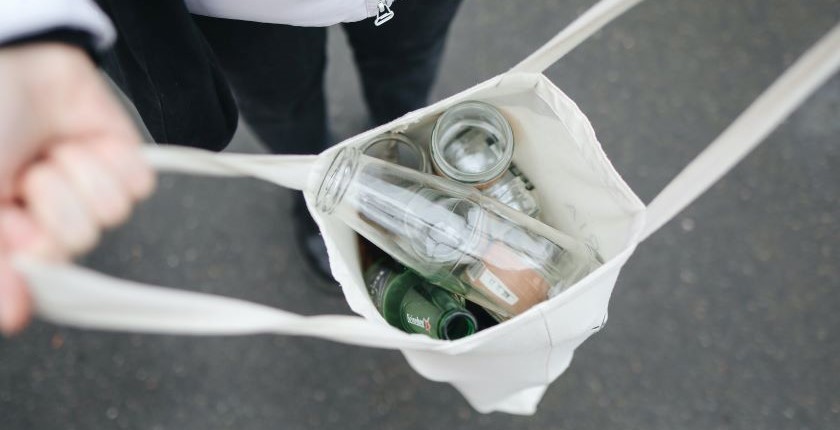
Photo: Polina Tankilevitch / Pexels
Out of 2.1 billion metric tons of solid waste that is generated on Earth every year, only about 16% is recycled. Global Recycling Day is celebrated on March 18, but given the processes, efforts, and actions required to recycle and reuse waste, every day is a day for recycling.
Recycling plays a major role in the circular economy and it is, without a doubt, increasingly important for the protection of natural resources. Recyclable material, called the seventh resource, saves over 700 million metric tons of CO2 emissions each year, and the volume is projected to increase to one billion tons by 2030.
Global initiative
About 46% of global waste is disposed of in an unsustainable manner, ending up in landfills, being burned, or ending up in water or garbage dumps. The 16% recycling rate is not enough. The amount of global waste is projected to rise to 3.4 billion tons by 2050.
The 16% recycling rate is not enough
Education, strong regulations, and legislation are needed, as are concrete actions in the fight against this growing environmental crisis, according to the Global Recycling Foundation, one of the many organizations dealing with this issue.
The goal of marking Global Recycling Day is to send a clear message to world leaders that recycling is too important not to be a global issue and that a common and joined-up approach to recycling is urgently needed, according to this foundation.
A common and joined-up approach to recycling is urgently needed
The intention is also to highlight the importance of circular economy. But the mission is also to appeal to people across the planet to think of the material that surrounds us as a resource, not waste. The foundation stressed that until that happens, we simply won’t value recycled goods appropriately and repurpose them in the right way.
Some facts about recycling
Over 50 percent of aluminum cans are reused, making them the most recycled item worldwide. It’s possible to recycle and return aluminum to the store shelf as good as new in just 60 days. The process requires only 5% of the energy used to produce the metal.
The aluminum can is recyclable and it can be returned to the store shelf in just 60 days
It is possible to continuously recycle glass and aluminum without loss of properties or change in quality. Yet every year, more than 28 billion glass bottles and jars end up in landfills.
Every year over 28 billion glass bottles and jars end up in landfills
There is an increasing number of zero waste initiatives, as well as individuals, who practice the repair, reuse, and lending of items. Their influences should not be ignored, no matter how small they may seem individual.
A study by Futerra found that 96% of people believe that their actions, whether they are donating, recycling, or making ethical purchases, can make a positive difference.
Waste is not trash, but resource
There is a consensus on what constitutes the first six natural resources, on whose exploitation today’s civilization is based. They are water, air, oil, natural gas, coal, and minerals.
Over the last 50 years, more of these resources were spent than in the entire previous history of mankind. It is another fact that shows the importance of recycling today.
Recyclable materials are recognized as the seventh resource, on which humanity depends in the supply of raw materials
Recyclable materials are recognized as the seventh resource on which humanity depends in the supply of raw materials, according to the Global Recycling Foundation. For waste management, sorting and recycling, there are mechanisms with effectiveness depending on several factors: from individual behavior, through the waste management system in cities, to the organization of the industry itself and the production of goods.
A small percentage of plastics are recycled
Plastic is not in any way scarce. More than 380 million metric tons of plastic are produced annually worldwide. As much as 91% is never recycled – it turns to unusable waste, while a part of it ends up in watercourses, seas, and oceans.
As much as 91% of plastics is never recycled – it turns to unusable waste
Plastics are becoming ubiquitous. It is estimated that the human body takes on average about five grams of microplastics per week, the equivalent of one credit card.
It is a known fact that plastic bags take up to a thousand years to disintegrate, but improper recycling practices can easily cause additional contamination, which is why some of the collected material ends up in landfills.
Recycling plastics requires 88% less energy than the production from raw materials
For instance, a plastic bag can contain food residues, which contaminate selected materials for recycling, so they are all directed to a landfill. Plastic recycling requires 88 percent less energy than production from raw materials.
Trees and offices
Nearly two thirds of the world’s tropical forests have been destroyed or degraded, but deforestation continues. Trees are cut down for paper and cellulose for making cardboard packaging or building materials, or they are just burnt to make room for cost-effective crops.
Each tone of recycled paper preserves 17 trees
Recycling can partially slow this trend until other solutions come. Every tone of recycled paper saves 17 trees. Old magazines and newspapers can be recycled into new ones in just seven days. About 70% of all waste in offices is paper.
More than half of the world’s population lives in urban areas, so cities and municipalities have a major responsibility towards recycling. But waste management systems are usually managed by local authorities, and they often vary from one city to another.


















I try to educate and I am pro-active: I am living in an affordable apartment, However I live amongst the “Super Rich” What I see thrown out can furnish a third world country! I collect cans, bottles and metal: But I recycle at the stores and I am treated like “trash”!!! This has to stop: